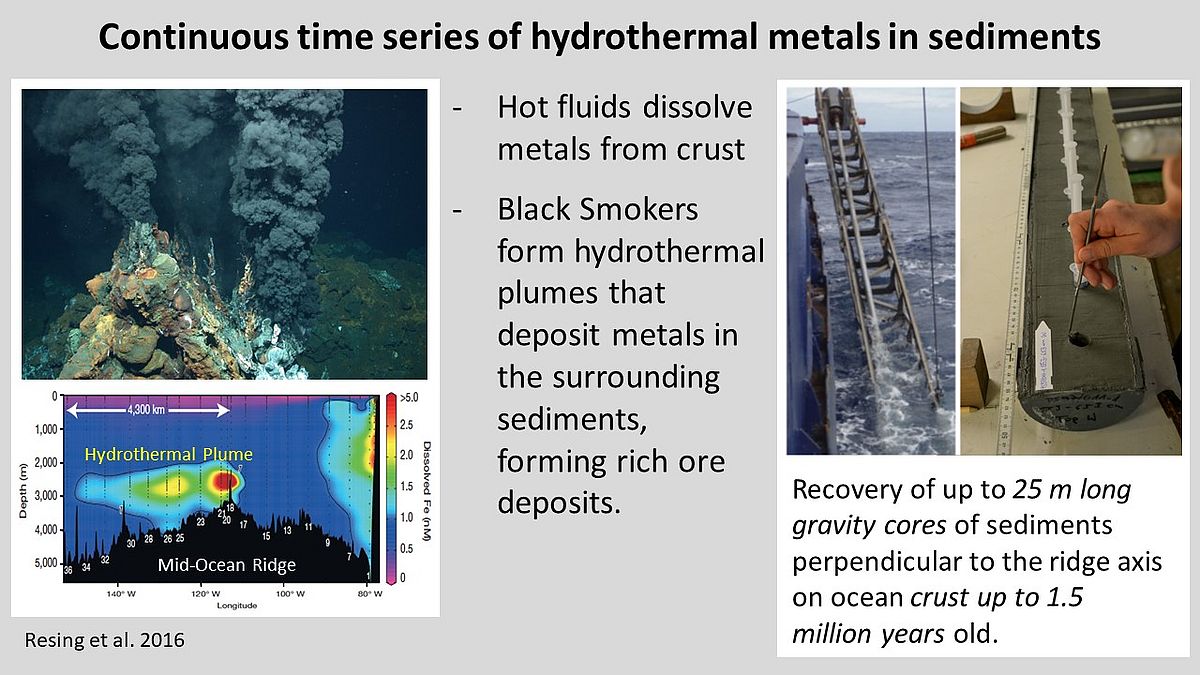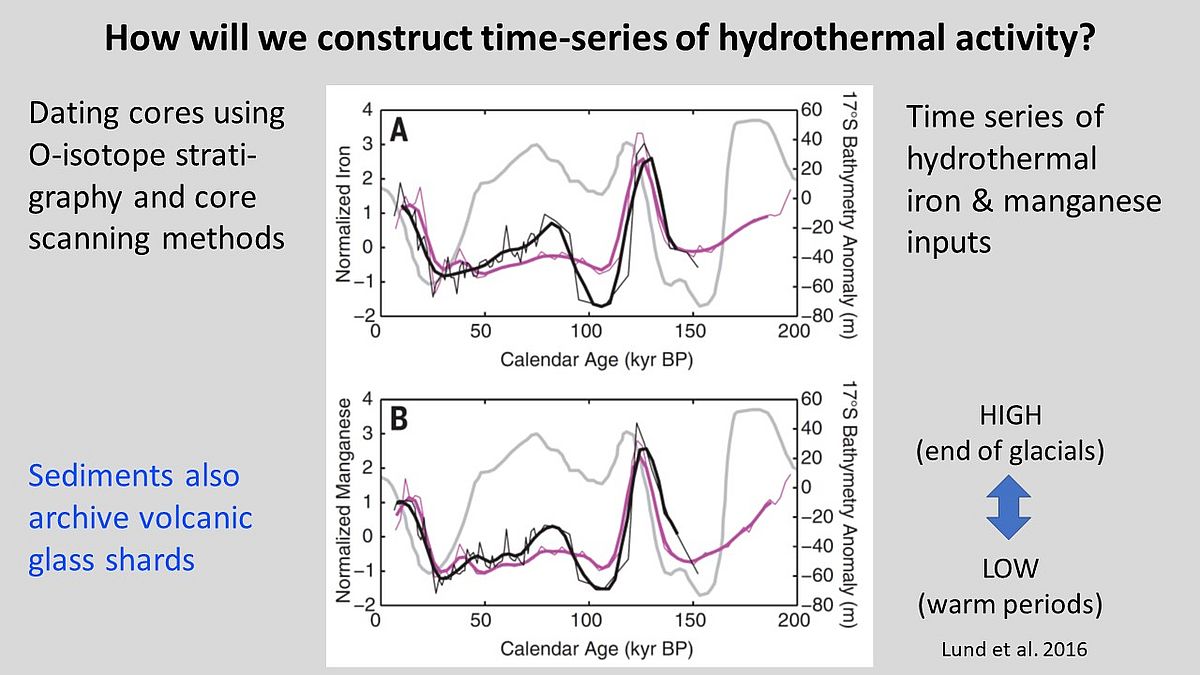T-SECTOR: Testing Solid Earth Climate connections Through mid Ocean Ridge time series
Time series of hydrothermal metals in sediments (PI: Martin Frank)
The hydrothermal metal content and fluxes of the cores (Fe, Mn, As, Pb, etc.) will be measured and combined with the evolution of authigenic Pb concentrations and isotope compositions of the sediments to constrain changes in hydrothermal activity and inputs into the bottom waters close to the vent sites. Authigenic Nd isotope compositions, obtained from the same samples, will identify changes in bottom water circulation. This approach will allow distinction of variations in Pb isotopes caused by hydrothermal inputs, bottom water circulation and oxygenation changes.These data will be compared to the records of sediment-hosted MORB glasses at each site and will allow us to constrain if changes in hydrothermal activity and the composition of the hydrothermal fluids were controlled by the same factors as the compositions of the MORB glasses or if additional parameters were important. The combined investigation of the evolution of the composition of seawater near hydrothermal vents and MORBs is entirely novel and will allow unique new insights into the linkages and causal relationships between sea level, the chemical composition of seawater as a function of hydrothermal activity and magmatic processes at the MORs at an unprecedented level.

At mid ocean ridges hot fluids circulate through the crust dissolving metals as a function of melt formation below. Hydrothermal activity along ridge axis is reflected by Black Smokers and hydrothermal plumes extending over thousands of km. As fluids cool the metals are deposited in various phases of the sediments on the ridges. In order to reconstruct time series of hydrothermal activity mirroring changes in magma melt production we plan to recover sediment cores along sections perpendicular to the ridge axes up to to 25 m long representing ocean crust up to 1.5 million years.

We will measure the oxygen isotope composition of carbonate microfossils of the new cores (in red), which will be compared to a dated reference curve representing past sea level (grey curve). Given that we will not be able to measure oxygen isotopes on all our cores, we will apply different core scanning methods that allow to obtain continuous time series of orbitally forced changes of parameters such as dust inputs or carbonate content that can also be correlated to the sea level curves. This will allow the establishment of age models of all cores. Based on these will then be able to establish time series of hydrothermal activity such as based on the Fe and Mn content or Pb isotope compositions of the authigenic, sea-water derived phase of the sediments.



